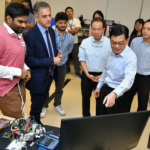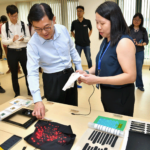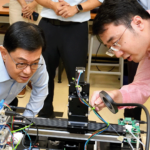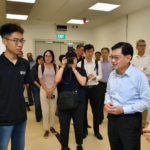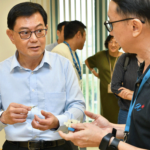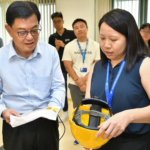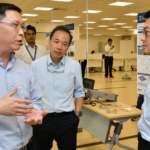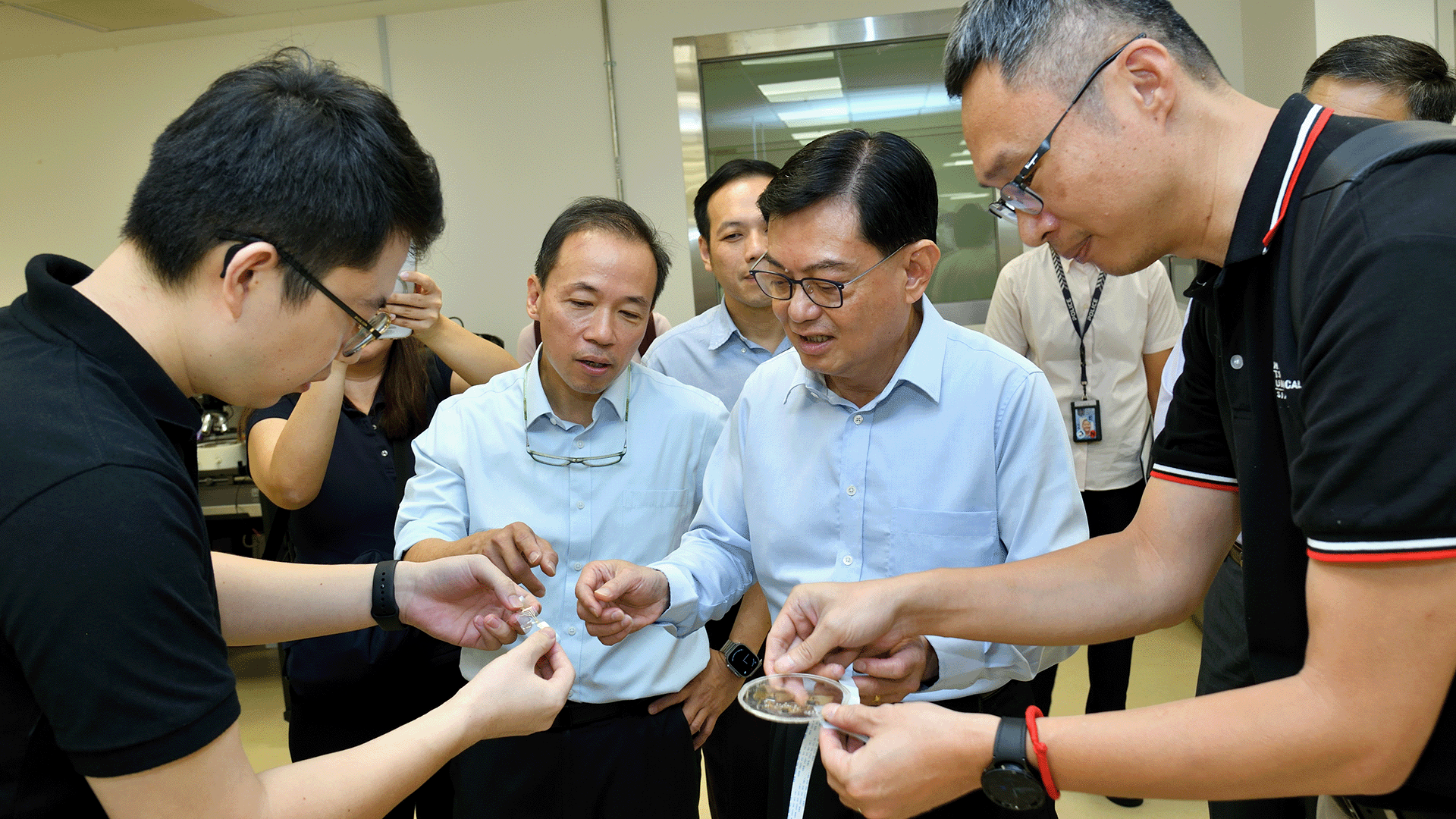
Deputy Prime Minister Heng Swee Keat has visited the Singapore Hybrid-Integrated Next Generation µ-Electronics (SHINE) Centre at NUS to learn about the facility’s work in cutting-edge microelectronics research.
Mr Heng visited the centre, based on the CDE campus, on October 2, meeting faculty, researchers and partners and engaging with presentations covering various aspects of SHINE’s work developing advanced technologies that will drive Singapore’s Smart Nation infrastructure.
Welcoming Mr Heng to the facility, the Director of SHINE Professor Aaron Thean gave an introduction to the centre and its pioneering research thrusts, as well as the current trends and likely future directions of the microcelectronics industry.
Established in 2021, SHINE is a heterogeneous integration research and development centre that works to develop next-generation hybrid-integrated (flexible and rigid) microelectronics. It is funded by the National Research Foundation (NRF) and Future Systems & Technology Directorate (FSTD).
Photo gallery:
“SHINE was set up as a research centre, but more and more now we see our role also as an ecosystem builder and facilitator of innovation,” Prof Thean, who is also NUS Deputy President (Academic Affairs) and Provost, said in his introduction.
“We are pushing on the frontiers of science,” he said. “One new arm that we are developing is training - we have workshops, but we also are setting up a new educational programme to try to feed into a gap that we have here in the nation which is people trained in semiconductor technology.”
Disruptive innovation
Going forward, Prof Thean said, as SHINE grows it aims to become “an industry-academic co-research sandbox” that would be a multifunctional centre driving disruptive innovation in Singapore’s semiconductor capability.
“It’s a place to try out ideas that industry doesn’t have a place to try out, and we’ll provide the talent and the space to do that,” he said.
The following phase, he added, would be looking at how to commercialise the solutions that the centre’s work identifies.
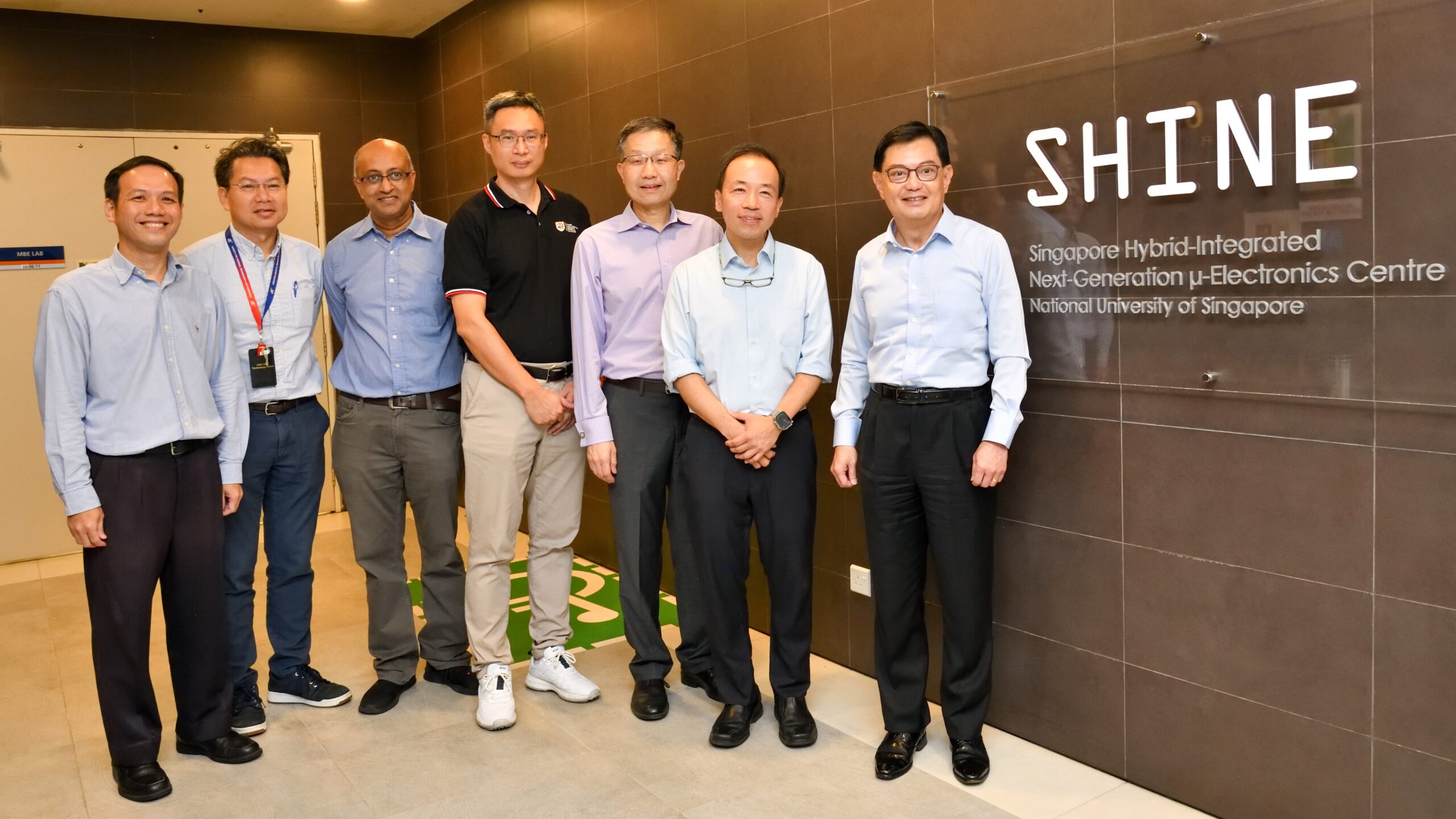
Among the highlights of Mr Heng’s visit to the centre was a tour of the SHINE Heterogeneous Packaging & Testing Lab, a state-of-the-art facility equipped with advanced tools that plays a crucial role in shaping the future of electronics innovation and smart technologies.
Mr Heng was also introduced to the centre’s “Lighthouse Project”, a multifaceted initiative focused on creating a specialised, lightweight, and highly flexible antenna designed for advanced radar applications and communication systems, including in space-based platforms.
Research thrusts
Researchers from SHINE also walked Mr Heng through several of the centre’s innovative research thrusts. These included a project to develop a battery-free e-textile with a range of potential uses in future wearable tech, and a Lego-like universal connector designed to improve stretchable devices such as soft robots and wearable healthcare devices.
Other projects on show for Mr Heng’s visit included research on the use of carbon-based nanomaterials to deliver smart and eco-friendly heat management for machines across various industries, enhancing both their efficiency and longevity.
Another exhibit showcased technology drawing inspiration from how geckos are able to stick to walls and ceilings to develop pneumatic soft actuators that can pick up and place extremely small objects. With the growing use of ultra-thin 2D materials and the semiconductor industry processing ever smaller, thinner and more fragile components, the SHINE researchers behind this technology say it will have wide applications.
Other technology under development at SHINE and featured on Mr Heng’s tour is aimed at developing highly flexible antennas that researchers say could transform the way devices communicate.
Overall the visit aimed to showcase SHINE’s position at the forefront of innovation and its dedication to creating a smarter, more technologically advanced future.
Prof Thean explained to Mr Heng that the primary mission of SHINE is to develop technology that empowers small companies to create cutting-edge products, particularly in the realm of smart gadgets and Internet-of-Things (IoT) technologies in fields such as wearables, smart vehicles, and space technologies.
To achieve this goal, SHINE collaborates with universities and research labs across Singapore to facilitate the integration of advanced semiconductor technologies, designing and developing both minuscule computer chips and larger electronic components, which are vital for advancing smart technology.
The centre has also forged partnerships with industry players including SOITEC, POET Technologies, Continental and Applied Materials, enabling work on projects aimed at enhancing electronic devices across various fields and applications.



